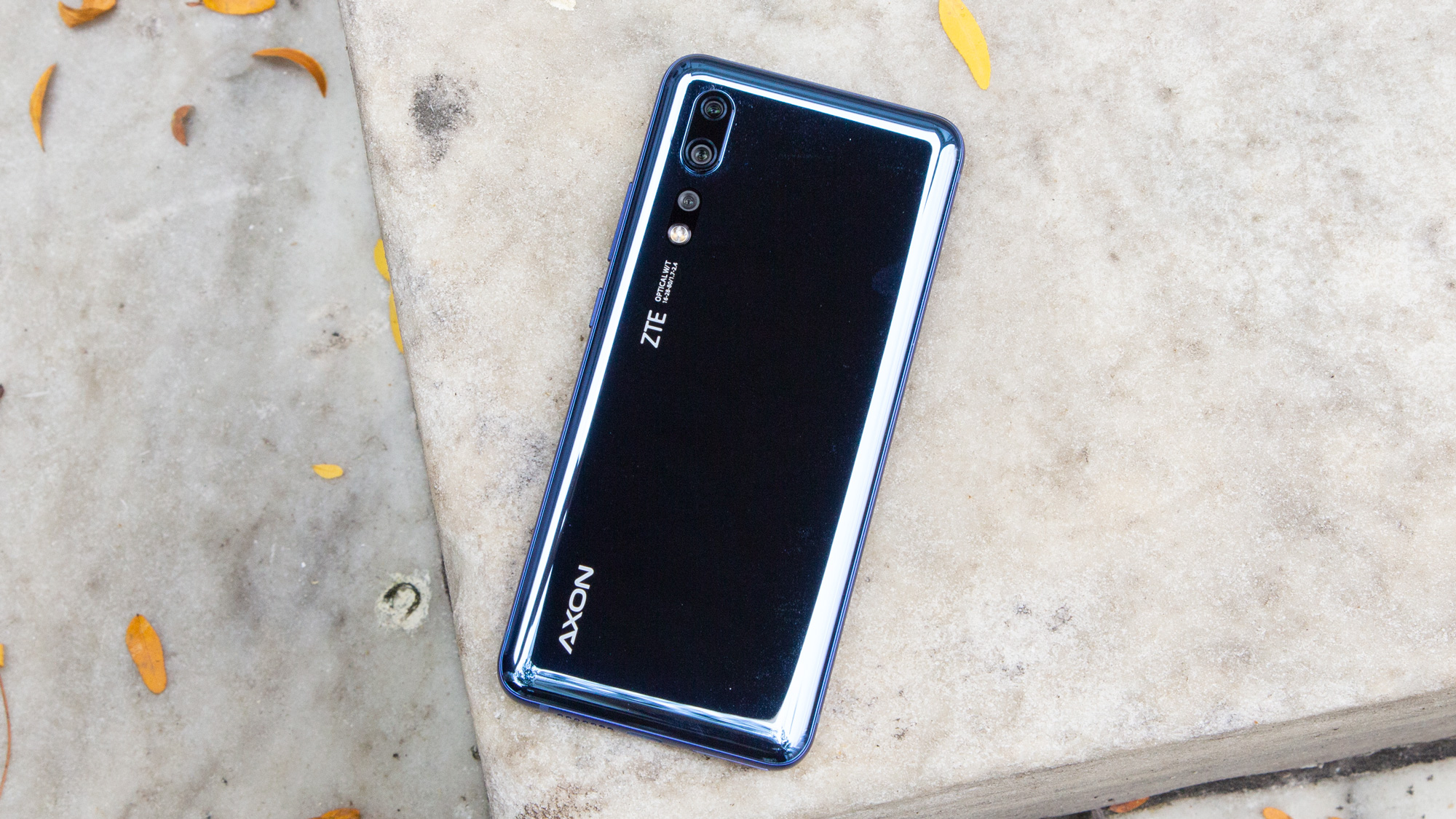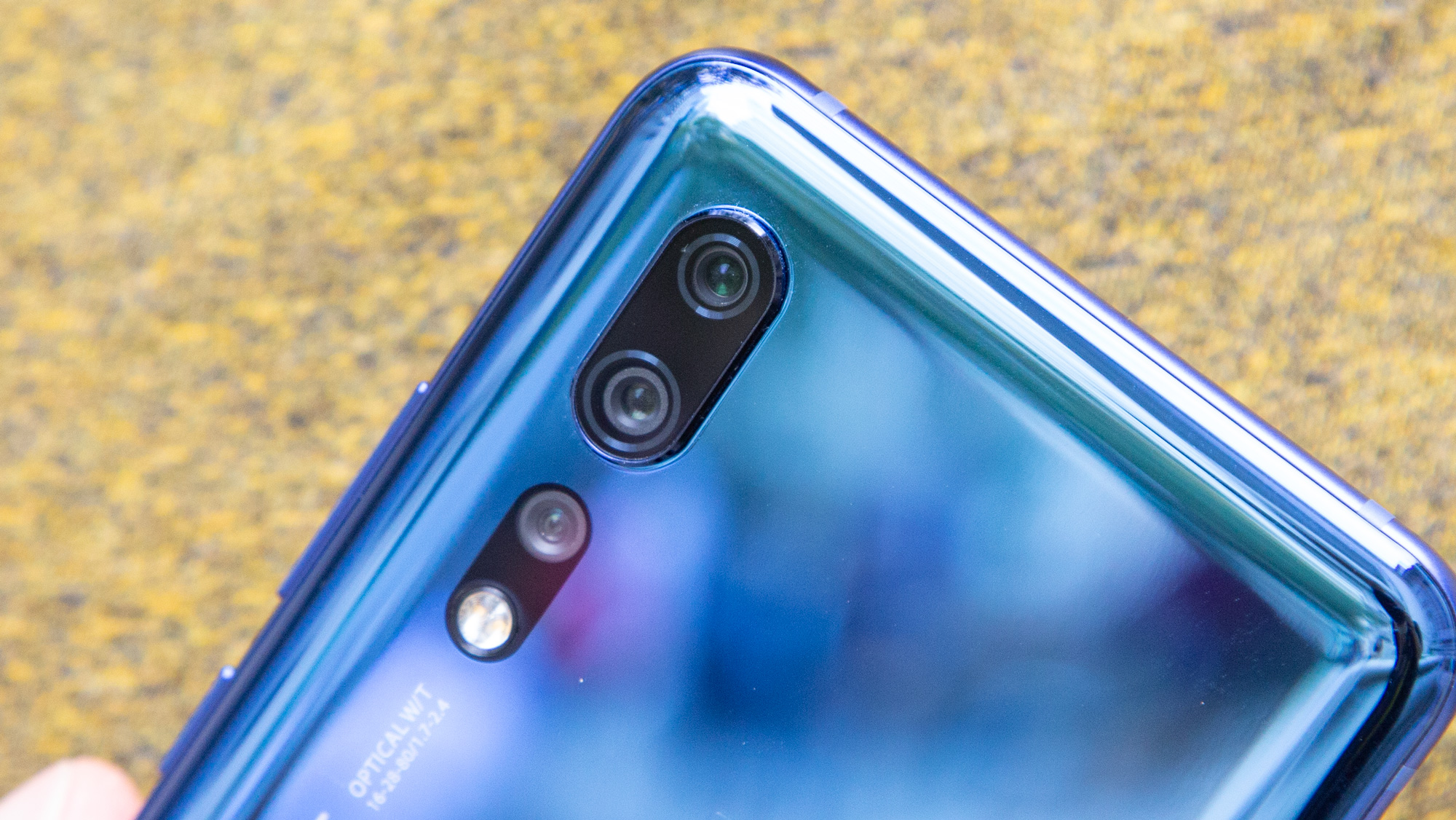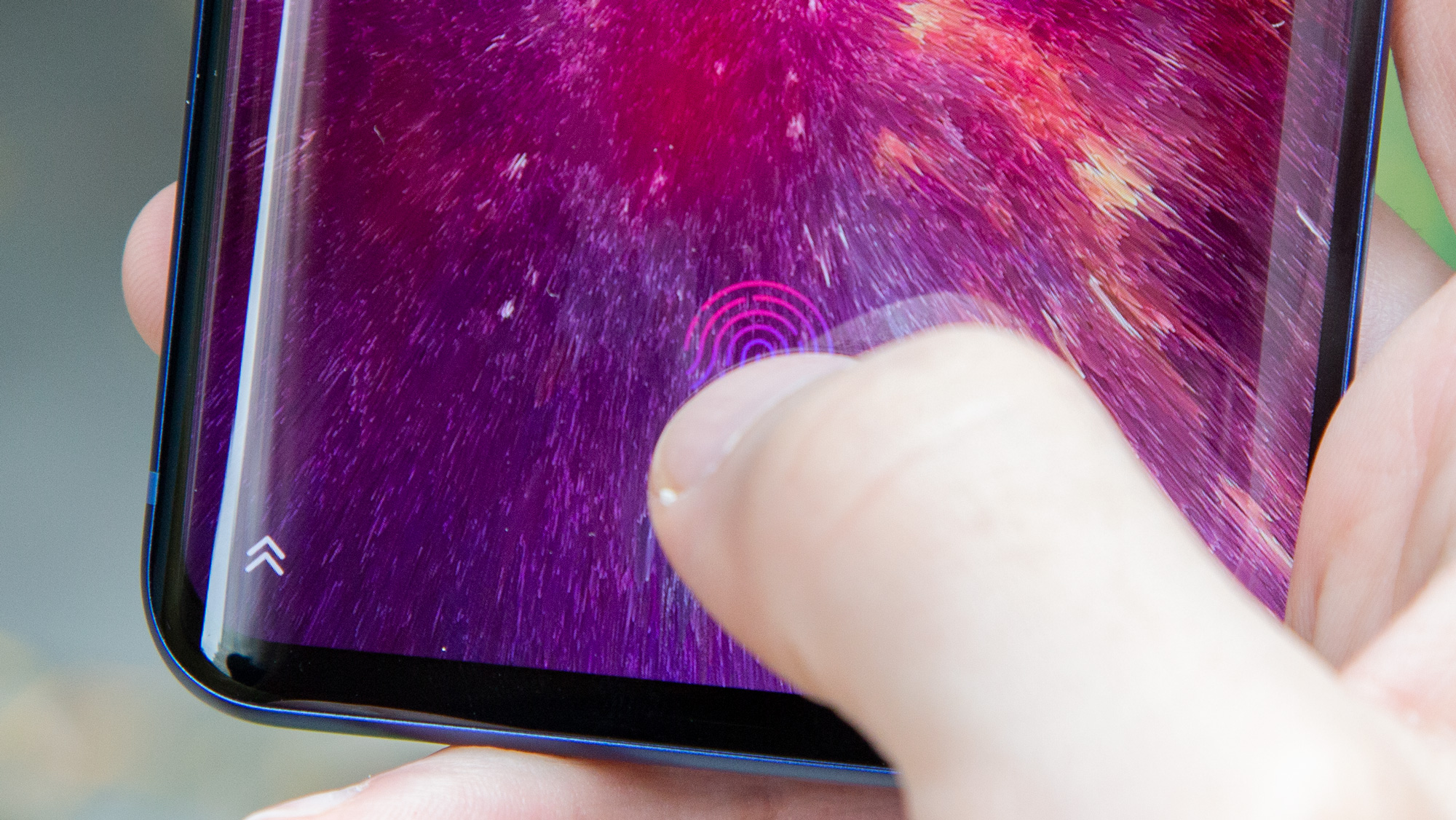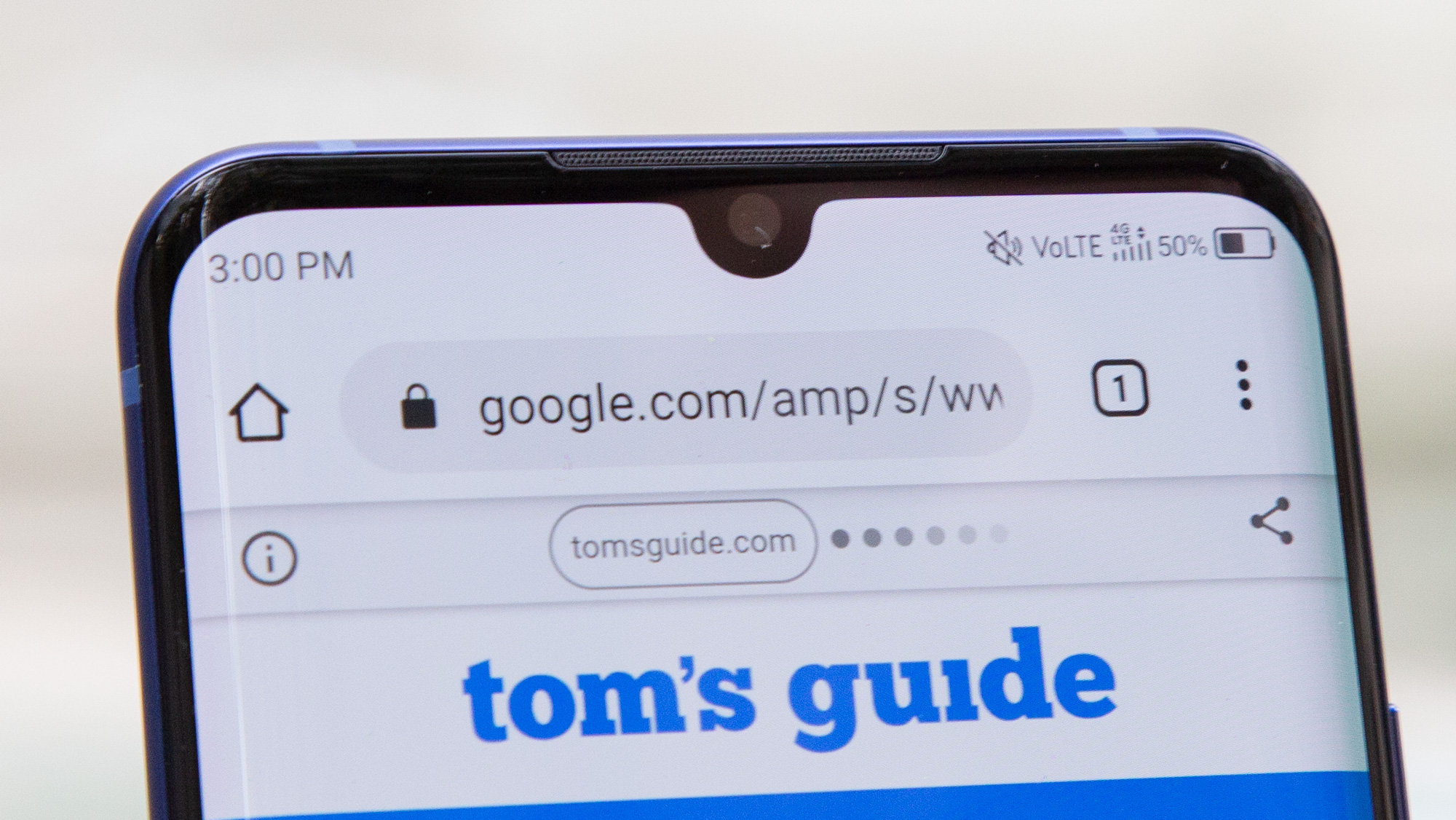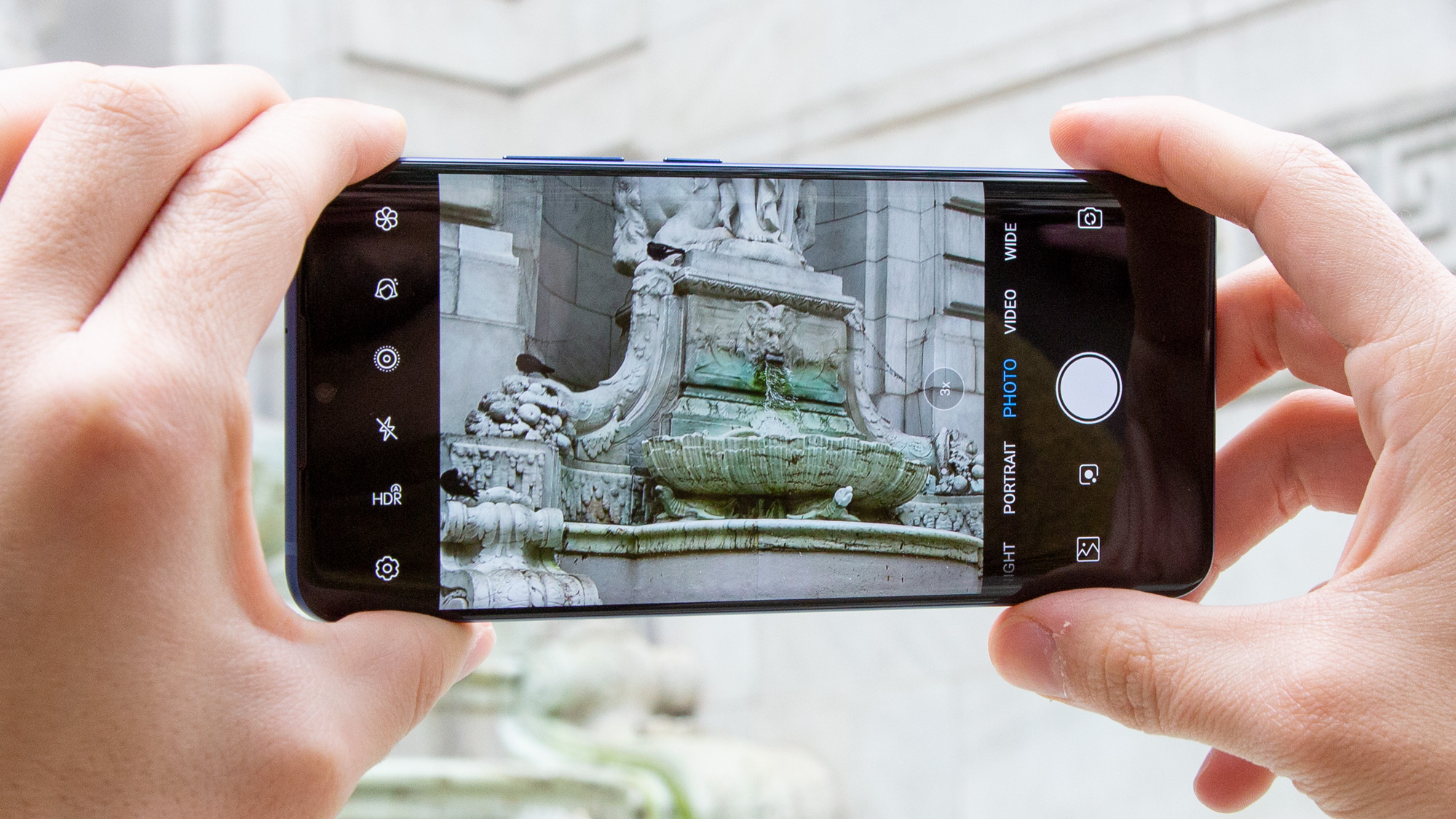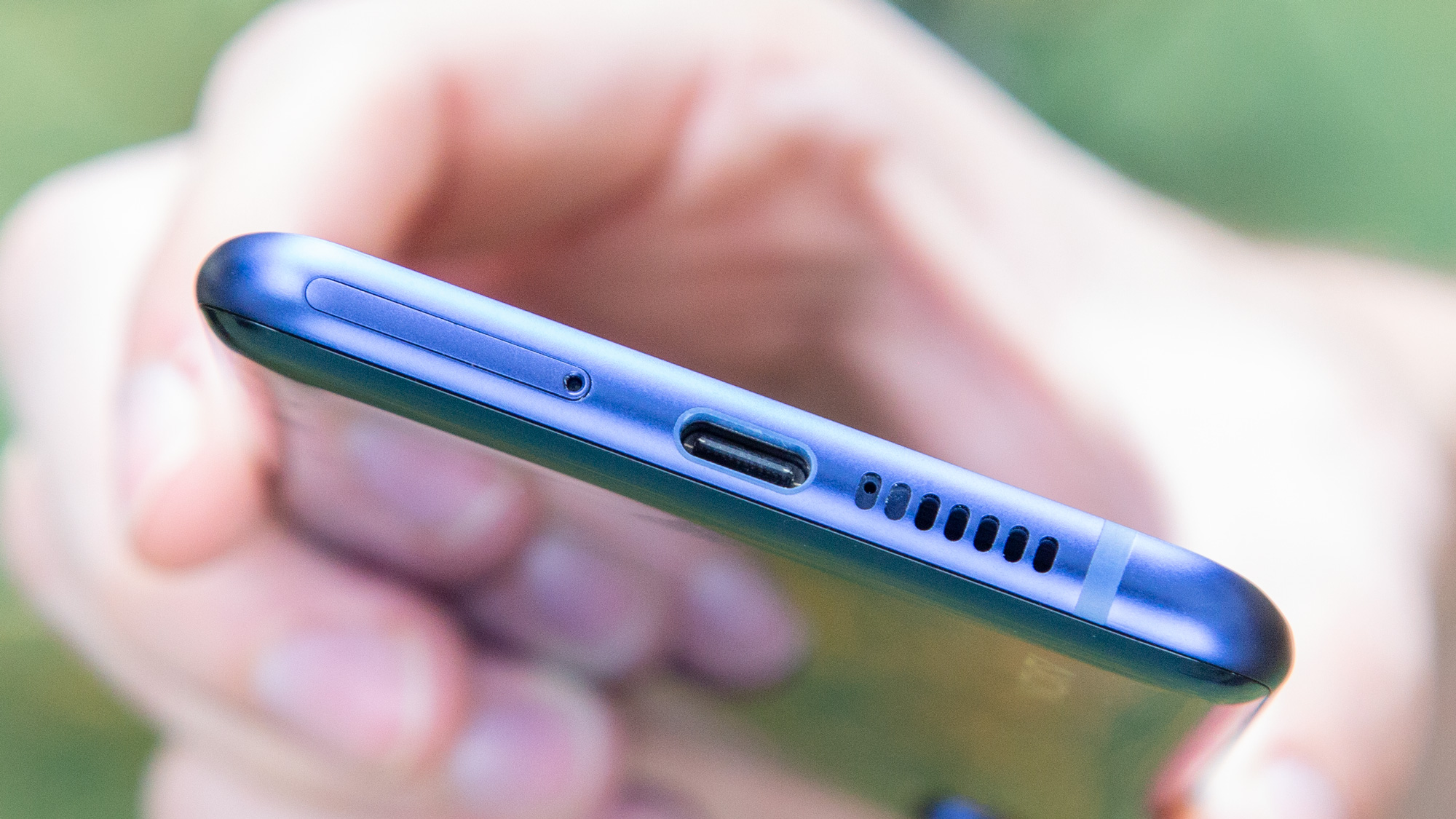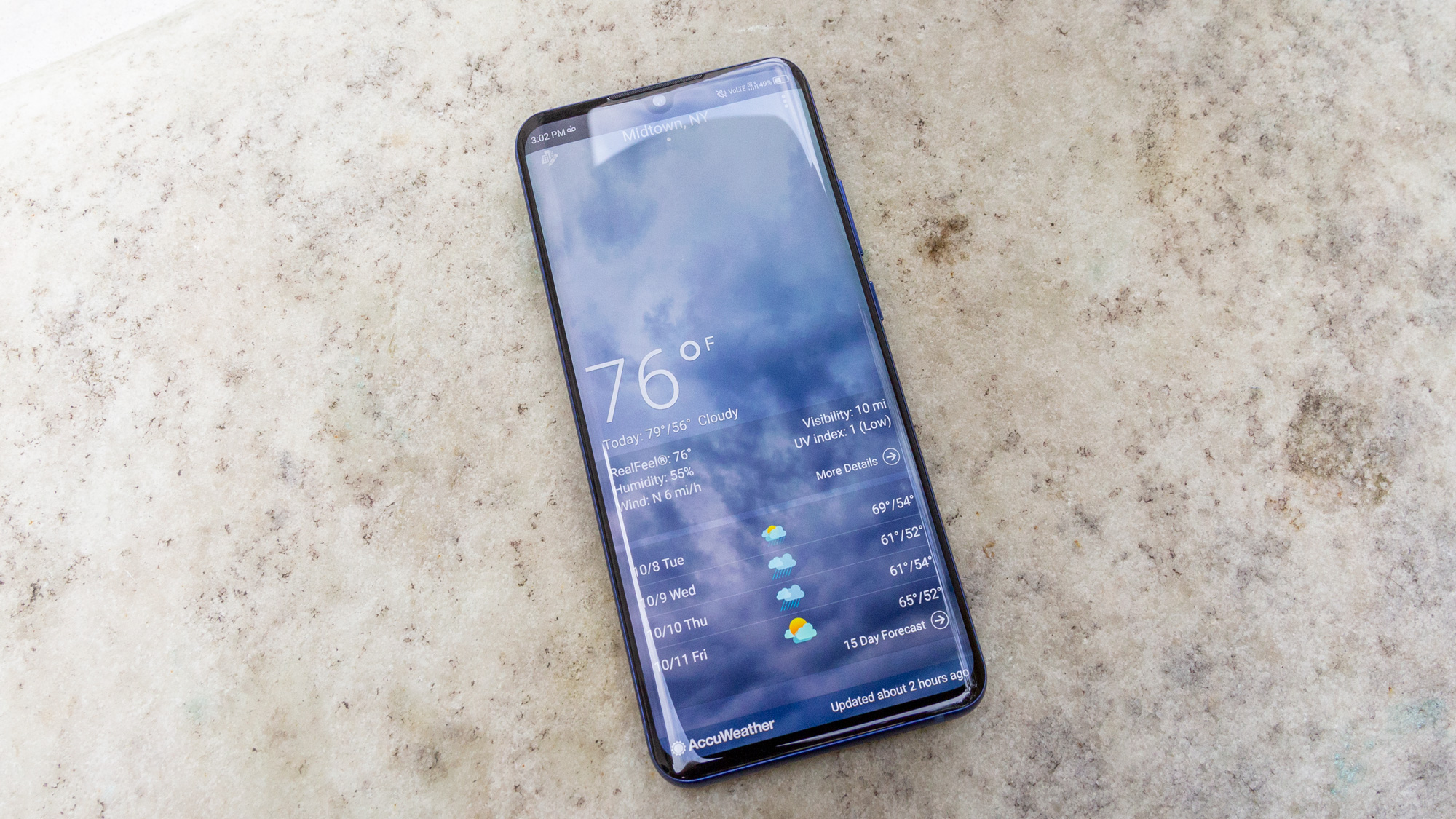Tom's Guide Verdict
The OnePlus 7T may be a more well-rounded phone for the money, but the Axon 10 Pro is a good alternative for those more concerned about battery life or storage capacity. If you're looking to spend less than the Axon 10 Pro's $549 price, look into the $399 Pixel 3a.
Pros
- +
Great price
- +
256GB storage standard
- +
Flagship performance
- +
Wireless charging support
- +
Pretty AMOLED display
Cons
- -
Messy software
- -
Derivative, boring design
- -
Camera disappoints
- -
Limited to GSM carriers
- -
Tinny audio
Why you can trust Tom's Guide
The Axon 10 Pro has been a long time coming. Last time we reviewed a high-end smartphone from ZTE, it was the ambitious, dual-screen Axon M back in 2017.
We weren't particularly big fans of the Axon M's buggy software and negligible productivity, though that would soon prove to be the least of the Chinese phone maker's problems. Less than a year later, the company was forced to halt all operations to comply with a U.S. government ban on ZTE's dealings with U.S. suppliers.
That ban dissolved just as quickly as it arrived, though, and ZTE soon after turned things around with the Axon 9 Pro late last year. But that phone missed some regions, including the U.S., which brings us to the Axon 10 Pro.
All that corporate turmoil might have diminished your expectations for ZTE's latest handset. However, the Axon 10 Pro is a pleasant surprise, not only a respectable comeback for the once-embattled phone maker, but also one of the finest inexpensive flagships available today. That's true even if some drawbacks keep it from toppling the OnePlus 7T as our best unlocked value.
Pricing and availability
The ZTE Axon 10 Pro starts at $549 for a model with 8GB of memory and 256GB of storage. Increasing the RAM to 12GB raises the price to $599.
That makes the Axon 10 Pro attractively priced, especially considering the kinds of features you get with the phone. But you'll have to hunt down ZTE's device if you're interested in it. It's not sold through any wireless carrier in the U.S., so you'll have to have to buy the phone unlocked either through ZTE or from a retailer like Newegg or B&H.
ZTE Axon 10 specs
| Price | $549, $599 | Row 0 - Cell 2 |
| Display (resolution) | 6.47-inch AMOLED (2340 x 1080) | Row 1 - Cell 2 |
| Rear camera(s) | Triple: 48-MP primary wide (ƒ/1.7), 8-MP telephoto (ƒ/2.4) with 3x optical zoom, 20-MP ultrawide (ƒ/2.2) | Row 2 - Cell 2 |
| Front camera(s) | 20-MP (ƒ/2.0) | Row 3 - Cell 2 |
| CPU | Qualcomm Snapdragon 855 | Row 4 - Cell 2 |
| RAM | 8GB, 12GB | Row 5 - Cell 2 |
| Storage | 256GB | Row 6 - Cell 2 |
| microSD slot? | Yes, up to 2TB | Row 7 - Cell 2 |
| Battery | 4,000 mAh | Row 8 - Cell 2 |
| Battery life | 10:14 | Row 9 - Cell 2 |
| Colors | Blue | Row 10 - Cell 2 |
| Size | 6.27 x 2.89 x 0.31 inches | Row 11 - Cell 2 |
| Weight | 6.17 ounces | Row 12 - Cell 2 |
What we like about the Axon 10 Pro
Stellar performance and specs for the price
Get instant access to breaking news, the hottest reviews, great deals and helpful tips.
It's hard to discuss the Axon 10 Pro without talking numbers. This is a device powered by Qualcomm's Snapdragon 855 chipset, the very same silicon that drives the likes of the Samsung Galaxy Note 10 Plus and OnePlus 7 Pro. The Axon 10 Pro also comes with 256GB of built-in storage and either 8GB or 12GB of RAM.
The Axon 10 Pro is close to the best deal there is in high-performance Android phones.
The big difference? Those phones start at $1,099 and $669, respectively, but the Axon 10 Pro costs anywhere from $120 to $550 less than that.
Right now, that's as close to the best deal there is in high-performance Android phones. The Asus ZenFone 6 is cheaper, at $499, but features 6GB of RAM and an LCD display in lieu of the Axon 10 Pro's more vivid AMOLED panel. The OnePlus 7T packs a slightly more powerful Snapdragon 855 Plus processor and a faster refresh rate, with its 90-Hz screen, but it makes do with half the storage and 8GB of RAM, all for $599.
ZTE is giving you a lot for a little here. And those specs don't just look nice on paper; they portend excellent all-around performance. The Axon 10 Pro is thoroughly snappy and handles demanding games, like PUBG Mobile and Asphalt 9: Legends, just as well as any other 855-toting handset I've used. With a Geekbench 5 multicore score of 2,666 for our review unit with 8GB of RAM, ZTE's device comes within a hair of the OnePlus 7T's 2,759 result. That's pretty impressive, considering the 7T has that newer 855 Plus chip.
MORE: Best Phones of 2019
Those with copious quantities of media, apps and games will appreciate that you can expand the existing 256GB of built-in storage by up to another 2TB with the use of a microSD card.
A satisfying screen
OLED displays are no longer exclusively the domain of the priciest phones. That said, I'm still delighted and surprised by the 6.47-inch, 2340 x 1080 AMOLED panel inside the Axon 10 Pro.
No, it's not quite as nice as the Fluid AMOLED screen inside the OnePlus 7T, which benefits from a 90-Hz refresh rate. That capability produces noticeably smoother animations compared to traditional, 60-Hz panels, like the one ZTE uses here. But the Axon 10 Pro's screen is still a pleasure to view.
Watching Netflix's Formula 1: Drive to Survive on both the Axon 10 Pro and OnePlus 7T, it's difficult to suss out any differences; both look great. OnePlus' handset may exhibit slightly more-saturated colors to my eye, though the discrepancy is negligible. The yellow nose of the Red Bull chassis shone brightly under the Monaco sun on both OLED displays.
The 4,000-mAh battery inside the Axon 10 Pro is among the largest you'll find for the price; only the 5,000-mAh ZenFone 6 eclipses the Axon.
ZTE doesn't offer the user a plethora of color profiles to choose from, as OnePlus and Samsung do on their phones, so you're quite limited if you want to tweak the look of on-screen content to your preference. However, one option, called Display Optimization, boosts saturation and contrast across the entire system and all media when activated. Ultimately, I preferred to ignore Display Optimization, which is turned off by default. The effect is a little unrealistic, though it's there for those looking for a bit more pop.
The Axon 10 Pro compares very favorably with the OnePlus 7T in terms of color accuracy and coverage. The ZTE device's Delta-E score of 0.31 is close enough that you can't really tell it apart from the OnePlus 7T's superior 0.27 result (numbers closer to zero are more accurate), while the Axon 10 Pro's 164.3% take of the sRGB color space is a bit bolder than OnePlus' 155.1%. Again, though, you'll be hard-pressed to tell them apart.
MORE: Smartphone Buying Guide: 9 Tips for Finding the Right Phone
In fact, the only disappointing aspect of the Axon 10 Pro's display is its low peak full-screen brightness of 430 nits. That's far below the 7T's 474 nits and worlds away from the LCD-powered iPhone 11's 652 nits. While having the brightest display in the world isn't a necessity, a panel that is too dim can be difficult to see outdoors on a sunny day. And the Axon 10 Pro is right on that edge of being frustrating to use in such conditions.
A long-lasting, wirelessly charging battery
The 4,000-mAh battery inside the Axon 10 Pro is among the largest available in a phone at this price. Only the ZenFone 6 eclipses it, with a gargantuan 5,000-mAh unit.
Still, 4,000 mAh is a lot of power, certainly enough to keep the Axon 10 Pro chugging along when lesser handsets would call it quits. The device put in a respectable 10 hours and 14 minutes in Tom's Guide's custom battery test, which involves endlessly cycling through web pages using T-Mobile's LTE network.
That time is demonstrably longer than the 3,800-mAh OnePlus 7T lasted (8:47), but well short of the ZenFone 6's remarkable 15-hour endurance. You might expect that, given the size of the battery Asus stuffed into the ZenFone 6.
MORE: Best Phone Battery Life - Longest Lasting Smartphone Batteries
The Axon 10 Pro uses Qualcomm's QuickCharge 4+ protocol for 18W fast charging, which is similar to the USB Power Delivery spec that the iPhone 11 Pro and Google Pixel 3 employ. ZTE's phone also supports wireless charging, which is a rarity at this price; none of OnePlus' phones, nor Asus' ZenFone 6, can interface with Qi induction pads.
What we don't like about the Axon 10 Pro
Derivative, uninspired design
The Axon 10 Pro is by no means an offensive or poorly designed smartphone; it's just not a very remarkable one to hold or look at.
In fact, in many ways, it feels like ZTE is making up for lost time with this device. The curved, matte-aluminum edge and steeply sloping Gorilla Glass enclosure evoke Samsung's Galaxy S8 and S9, though the bezels are considerably slimmer above and below the display on the Axon 10 Pro. There is a notch on ZTE's phone as well, though it's that harsh, U-shaped kind that juts unnaturally into the top of the panel.
If there's nothing particularly distinctive about the front of the Axon 10 Pro, good luck highlighting anything unique about the back either. You've got a trio of cameras stacked vertically in the upper left corner, with two housed in a raised enclosure and the last one flush with the phone, next to the flash.
ZTE has pulled so many design motifs from rival phones that the Axon 10 Pro resembles a nameless pastiche of every handset we've given a passing glance this year.
The phone's glass back has a mirrored finish, which looks sort of nice but also cheap; if you told me it was plastic, I'd believe you. For what it's worth, ZTE and Axon branding sit below the lenses on the left edge, similar to Huawei's markings on its P20 smartphone. It doesn't look great, but at least it allows you to tell the Axon 10 Pro apart from the competition.
ZTE has pulled so many design motifs from rival phones that the Axon 10 Pro resembles a nameless pastiche of every handset we've given a passing glance this year. At least this device still manages to be light in the hand, as this Axon weighs about half an ounce less than the OnePlus 7T. ZTE's phone also carries a more agreeable footprint that's a bit tighter in every dimension. It doesn't feel as unwieldy during one-handed operation as OnePlus' products often do. The in-display optical fingerprint sensor works well enough and saves you from blindly searching for a scanner on the back of the device.
The camera is subpar
On paper, there's no reason to think the triple-lens camera on the back of the Axon 10 Pro would be worse than any other phone's shooter. The Axon 10 Pro features a 48-megapixel primary sensor tied to an ƒ/1.7 wide-angle lens, coupled with 8-MP, ƒ/2.4 telephoto and 20-MP, ƒ/2.2 ultrawide shooters.
There's an optional AI Camera mode available, similar to Samsung's Scene Optimizer, which tunes exposure parameters based on what the lenses are pointed at. Interestingly, this software isn't activated out of the box; you have to go into the camera settings and enable it yourself. We turned the feature on for the following photos, though the object recognition was hit or miss and came into play only for the first image in this series.
The Axon 10 Pro impressed initially with a satisfying shot of a yellow flower. It's a complex scene; you have a mix of natural light falling into the room from an adjacent window and colored, indoor light shining from above. To make things even more challenging, the camera is positioned against the main light source. However, ZTE's hardware and software navigate the visual landscape well, exposing the petals sharply, without oversaturating the yellow like the OnePlus 7T did. Even the flower's red spots are more individually discernible on the Axon 10 Pro. That said, I much prefer the slight grain to the 7T's bokeh, and OnePlus' phone is demonstrably more skilled at reining in the highlights outside.
Here, we used optical zoom with both phones, 3x in the case of the Axon 10 Pro and 2x for the OnePlus 7T. You could certainly make the argument that 3x power is more useful than 2x when you really need optical zoom, but it's hard to ignore that the 7T's showing is plainly superior here. It's harder to keep still the more you zoom in, but ZTE hasn't done enough to stabilize images captured with the telephoto, as you can see by the slight blurriness of the succulent. Additionally, the mix of colored lights overhead creates a beautiful gradient against the leaf of the plant in the background of the OnePlus 7T's shot, something that's totally absent in the Axon 10 Pro's more muted result.
On that note, ZTE's cameras have an odd habit of desaturating colors, and not in a way that looks pleasing or more realistic. You'll have to take my word for it that the light striking the mask and white wall in this photo should be more red than pink, as it is in the 7T's photo. Additionally, the Axon 10 Pro over-smoothed textures, especially if you pay close attention to the streaks of paint around the mask's nose.
But by far the Axon 10 Pro's worst showing came when I attempted to take some portraits of my colleague Shaun. I'll concede that OnePlus' software took some liberties with Shaun's skin tone, making it a tinge warmer and redder than it truly is. But even with those minor inaccuracies, it's still light years closer to the ideal than the Axon 10 Pro's bleached-out, shaky attempt. The ZTE portrait fails on every level. There's less detail, especially in his tattoos; the highlights are completely blown out; the contrast is all wrong and even the bokeh is inconsistent and looks like it was shoddily approximated in Photoshop, after the fact.
Still, I wouldn't say that the Axon 10 Pro's cameras are awful; for the price, they're as decent as you'd expect. The problem for ZTE is the competition. OnePlus stepped up its camera game, and Google upended the entire segment with the $399 Pixel 3a, which captures photos that are borderline indistinguishable from those taken on a Pixel 3. Before 2019, cheap phones with very good cameras were impossible to find. That's changing, but sadly, ZTE's latest is not part of that trend.
Tinny audio
ZTE is pushing the Axon 10 Pro's sound-production capabilities, as the phone comes with DTS:X Ultra panoramic surround sound built in (though, once again, strangely not enabled by default).
Phone makers rarely tout audio improvements the same way they push photographic or display prowess, so I had high expectations for the Axon 10 Pro's stereo speakers and software. Unfortunately, I was left wondering why ZTE felt compelled to speak up in the first place.
Turning that DTS:X feature on from the preinstalled app definitely lends a bit of airiness to audio playback that better envelops the user. But the sound itself is tinny and compressed, with a lack of warmth and a low peak loudness. The Axon 10 Pro stashes its drivers in the earpiece and along the bottom edge, and while the latter driver appears up to the task, that top speaker is woefully underequipped.
MORE: Best Wireless Earbuds of 2019
If you hold the device with the bottom grille resting on your pinky, which is the way I sometimes hold phones, that anemic earpiece will fail to rise to the occasion every time. That's what happened when I listened to Chastity Belt's "Rav-4." Immediately, I noticed something was amiss; the weight of the track's shimmering, aquatic guitar melody was canceled out by the shrillness of those speakers, which also did a number on singer Julia Shapiro's normally rounded, gentle crooning. The cymbals, typically a foil against the song's cavernous soundscape, were lost somewhere high in the mix, struggling to stand out.
Messy, dated software
The Axon 10 Pro features Android 9 Pie out of the box, which is more than a little frustrating given the proximity of the phone's U.S. release to the Android 10 update last month. While the device hit shelves in some regions in late spring, it didn't go on sale in the U.S. until late August.
That means Axon 10 Pro owners have to wait for Android 10, which is expected before the end of the year. In the meantime, you're left with ZTE's flavor of Android 9, which has once again reminded me why I dislike most manufacturers' custom skins.
While ZTE has somewhat scaled back its customizations and the number of stock apps it installs (mercifully, Google Photos is the only gallery installed on the device), the interface is still rather ugly and dated. It's nowhere near as elegant as what Google ships on its Pixels, the Android One software on budget models from Nokia and a few other OEMs, or OnePlus' superpolished OxygenOS.
Case in point, the tray of persistent apps along the bottom of the Axon 10 Pro's home screen is misaligned with the grid of apps above it. This sort of thing doesn't meaningfully affect your experience in using a phone, but it lends an air of carelessness and a lack quality control. Also, I can't unsee it.
But the visuals might be somewhat forgivable if the Axon 10 Pro offered other features to make up for that aesthetic drawback. It doesn't. In fact, there's no system-wide dark theme here and no Digital Wellbeing suite, so the Axon 10 Pro offers less, in terms of features, than what you get from most Android phones nowadays.
MORE: Top 7 Android 10 Features That You Should Try First
For what it's worth, there is an optional gesture-navigation system onboard that pretty much copies what will come standard on Android 10, and it's fine. There's also a strangely named on-screen button you can elect to use, called Z-Pop, which lives on the edge of the screen. You can use this button to go back, return home or surface your recent apps; it seemed pretty useless when I played around with it.
I can forgive an Android front end that isn't pretty to look at if it's at least functional. ZTE's is neither and thus fails to justify its existence.
Limited availability
Although the Axon 10 Pro is very reasonably priced, that affordability has unfortunately come at the expense of availability, and not just because no carrier offers the device. The Axon 10 Pro will work only on GSM networks like AT&T, T-Mobile, Metro and Cricket.
That means Verizon, Sprint and Boost are out, as well as MVNO carriers that piggyback off the towers of those CDMA networks, like Xfinity Mobile. And unlike OnePlus' phones, the Axon 10 Pro is not certified to work on Verizon's towers as an LTE-only device, so you can't even use that loophole. It's unfortunately a deal breaker for a great many users interested in ZTE's lower-priced flagship phone.
Bottom line
I find myself conflicted about the Axon 10 Pro. One one hand, it's an astonishing value. ZTE delivers the right cocktail of specs, like 256GB of storage, an AMOLED display and, of course, that Snapdragon 855 CPU, all for an unbeatable price. This phone is a great alternative to the OnePlus 7T, or a good upgrade from the Pixel 3a XL for those who care more about performance than photography.
But unfortunately, the phone's flaws — the humdrum design, the so-so cameras and the careless approach to software — ensure that an alternative to the OnePlus 7T is all the Axon 10 Pro will ever be. It's a bit of a shame, because ZTE has gotten a lot of things right with this phone, especially when you consider where the company was one year ago. The Axon 10 Pro might not top our list of the best unlocked phones, but it comes close.
Adam Ismail is a staff writer at Jalopnik and previously worked on Tom's Guide covering smartphones, car tech and gaming. His love for all things mobile began with the original Motorola Droid; since then he’s owned a variety of Android and iOS-powered handsets, refusing to stay loyal to one platform. His work has also appeared on Digital Trends and GTPlanet. When he’s not fiddling with the latest devices, he’s at an indie pop show, recording a podcast or playing Sega Dreamcast.

